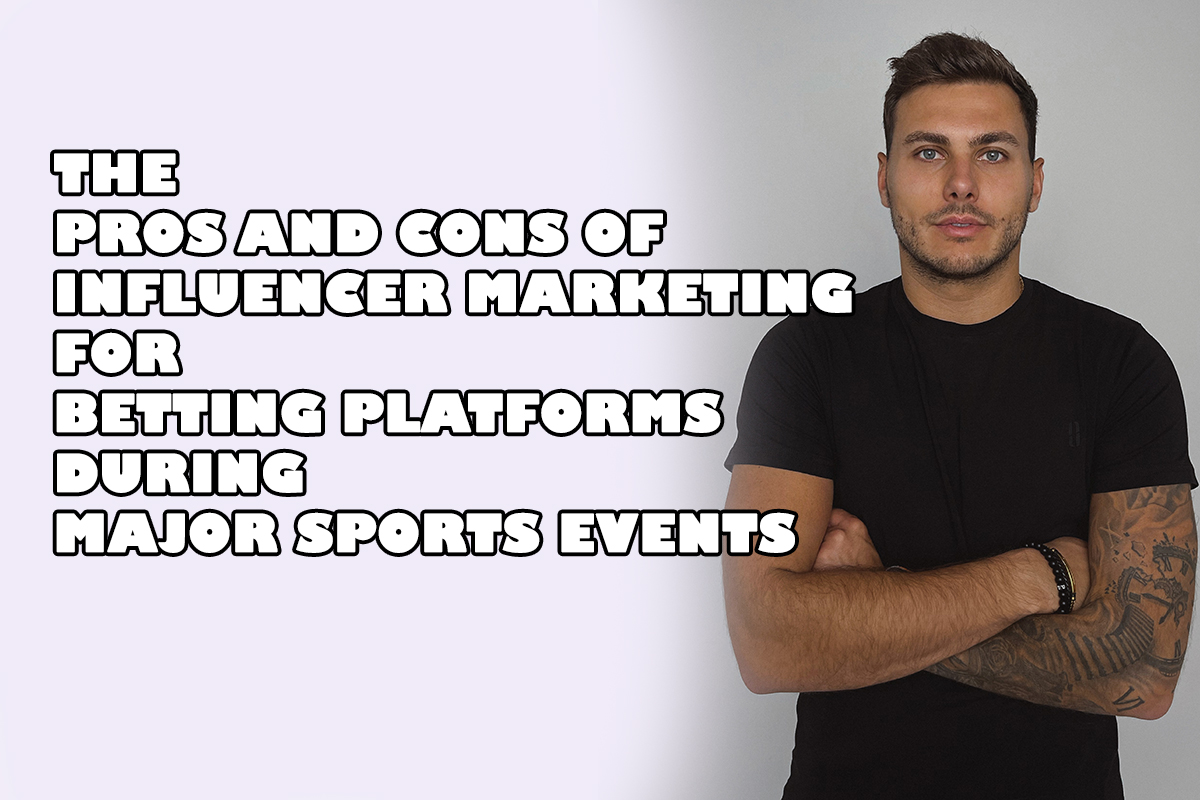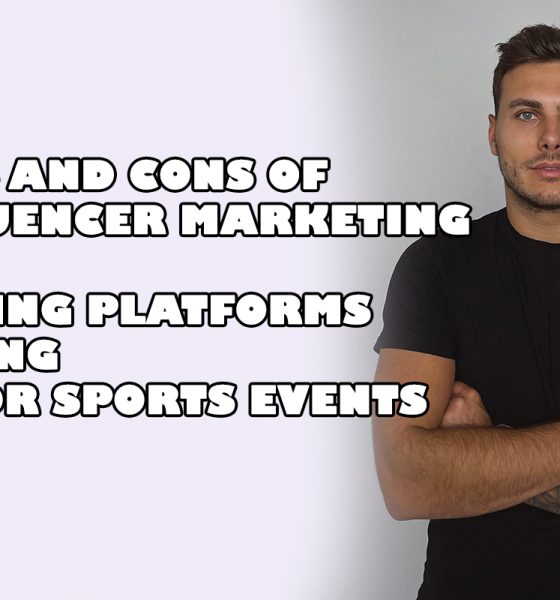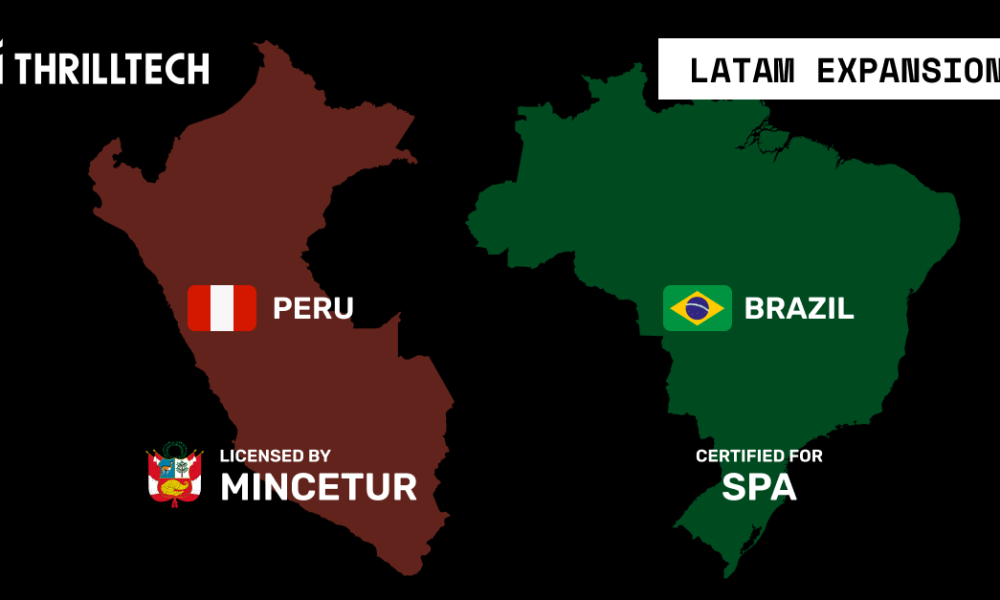

Latest News
The Pros and Cons of Influencer Marketing for Betting Platforms During Major Sports Events
The online sports betting industry is skyrocketing: according to Statista, the market revenue is predicted to reach approximately $46B in 2024, and grow up to $65.68B by 2029. This growth is driven by numerous factors, including accessibility and convenience of betting from home; shift in consumers preferences; emerging trends and technologies; female users growth; and more.

The availability of a wide range of sports events and the ease of placing bets with just a few clicks attract increasing numbers of people seeking excitement and wins. And it is obvious that major events like the UEFA Euro, Copa America, the Super Bowl, and the Olympics represent golden opportunities for betting platforms to engage with their audiences and boost deposits. These events capture the attention of millions of fans worldwide, and create a fertile ground for marketing strategies that can drive user engagement and boost platform activity. One such strategy that has gained significant traction in recent years is influencer marketing.
Influencer marketing has proven to be a powerful tool across various industries, and its impact on the betting sector is no different. 89% of marketers admit that the ROI from influencer marketing is comparable to or better than other marketing channels. By leveraging the reach and credibility of influencers, betting platforms can tap into their followers’ enthusiasm and encourage participation in betting activities.
Most betting platforms prefer to invest in influencer marketing during major sports events. However, while the benefits are significant, there are also challenges that must be navigated. In this article, Pavel Beinia, CEO & Founder of Famesters, will delve into the pros and cons of this approach, providing insights and strategies for betting platforms to maximize their marketing efforts.
The pros of influencer marketing for betting platforms
-
Engaged audience eager to bet.
Major sports events generate an immense amount of excitement and engagement among sports fans. This heightened interest creates an opportunity for betting platforms to capitalize on the attention. Influencers, with their dedicated follower base, can amplify this excitement by sharing their own enthusiasm for the events, thereby encouraging their followers to engage in betting activities. 72% of consumers trust influencers’ opinions as much as their own friends’. When influencers discuss upcoming matches, share their predictions, or highlight special bets, it resonates with their audience, making them more likely to participate.
-
User acquisition.
Influencer marketing can extend the reach of betting platforms beyond their typical audience. During major sports events, even individuals who do not regularly engage in betting might be tempted to place a wager. Influencers can appeal to these casual fans by framing betting as an integral part of enjoying the event. For example, an influencer might say, “Everyone’s placing bets on the Euro – it’s part of the fun!” This approach can draw in new users who might not have considered betting before, broadening the platform’s user base.
-
Enhanced user attraction mechanisms.
Betting platforms can leverage influencer partnerships to promote special bonuses and other promotions tied to major sports events. For instance, a platform might offer a limited-time promotion where deposits are doubled if users enter a specific promo code shared by the influencer. However, the bonus program can be enhanced further – for instance, “only for this match”, or “if you register today before midnight, you will receive not only the standard $200 deposit bonus, but also 50 free spins”. Additionally, influencers can create excitement around merchandise giveaways or exclusive event-related contests. These tactics enhance user attraction mechanisms and not only encourage to place bets but also create a sense of urgency that prompts users to act quickly to take advantage of the offers.
The cons of influencer marketing for betting platforms
-
High demand for top influencers.
One of the significant challenges of influencer marketing during major sports events is the high demand for top influencers. Influencers with large followings and strong engagement rates are often booked months in advance. This means that betting platforms planning their campaigns close to the event dates may find it difficult to secure these high-profile influencers. As a result, they might have to settle for less popular influencers who may not deliver the desired results. Moreover, last-minute planning increases the risk of relying on influencers who have suddenly become available due to cancellations, potentially compromising the quality and consistency of the campaign.
Start planning and reaching out to influencers several months before the event. This will increase the chances of securing top influencers at more reasonable rates.
-
Saturation of advertising content.
Many betting brands are taking advantage of increased audience attention during sports events and buy lots of influencer integrations. This leads to a saturation of advertising content, with numerous brands competing for the same audience. When multiple betting platforms launch similar campaigns, the audience may experience ad fatigue. This leads to decreased effectiveness of brands’ marketing efforts: ad fatigue can lead to a 30% decrease in engagement rates. This is why it is crucial for betting platforms to differentiate their campaigns and constantly vary the advertising content and messaging.
Avoid repetitive and intrusive advertising by diversifying content. Incorporate behind-the-scenes footage, live interactions, and unique storytelling to keep the audience engaged.
-
Increased rates from influencers.
The high demand for influencers during major sports events often results in increased rates. Influencers are aware that brands are competing for their endorsement and can therefore command higher fees for their services. For betting platforms, this means a higher marketing budget to secure the right influencers.
Select influencers in advance and negotiate long-term contracts that include multiple posts leading up to and during the event. By locking in agreements early, platforms can avoid last-minute price surges and ensure a more stable and predictable budget.
Conclusion
Influencer marketing is a potent strategy for betting platforms, especially during major sports events when audience engagement is at its peak. While influencer marketing during major sports events presents both opportunities and challenges, strategic planning and execution can lead to significant rewards. Betting platforms that effectively leverage the power of influencers will find themselves well-positioned to engage their audience, attract new users, and drive successful campaigns.
As you prepare for the next major sports event, consider how you can integrate influencer marketing into your strategy. Plan early, be creative, and form strategic partnerships to maximize your campaign’s impact.
Pavel Beinia, CEO & Founder of Famesters influencer marketing agency
The post The Pros and Cons of Influencer Marketing for Betting Platforms During Major Sports Events appeared first on European Gaming Industry News.
Gambling in the USA
TCSJOHNHUXLEY to Sponsor Inaugural G2E Dealer Championship

G2E Las Vegas 2025 is set to host the first-ever US Dealer Championship, and TCSJOHNHUXLEY is delighted to announce its sponsorship of this landmark event. The championship, which celebrates the skill and professionalism of casino dealers, will take place at The Venetian Expo from October 7-9, 2025.
The G2E Dealer Championship will bring together the nation’s top casino dealers to compete for the title of “Best Dealer.” Contestants will be judged on their technical precision, game knowledge, and ability to provide a superior player experience.
As a proud sponsor TCSJOHNHUXLEY will be supplying all the Roulette tables for the competition, ensuring the highest standard of equipment for the championship. This not only highlights the company’s commitment to the dealers but also provides the perfect platform to showcase its renowned manufacturing expertise. TCSJOHNHUXLEY’s world-class Roulette tables are testament to the precision engineering and superior craftsmanship that has set the industry standard for decades.
Phil Lee, TCSJOHNHUXLEY Chief Financial Officer & Managing Director Americas comments, “We are delighted to be a part of the first G2E Dealer Championship, an event that truly celebrates the invaluable role of casino dealers. Dealers are the heart of the live gaming experience, and we are committed to supporting their success. Our outstanding Roulette tables will provide the perfect platform for these talented professionals to showcase their artistry and skill.”
The G2E Dealer Championship will take place at Booth #5225, located in The Strip at G2E.
The sponsorship underscores TCSJOHNHUXLEY’s unwavering commitment to the live gaming sector and the professionals who drive its success. The company invites all attendees to witness the championship and visit its stand at Booth #4439 during the expo to see its full range of innovative solutions.
The post TCSJOHNHUXLEY to Sponsor Inaugural G2E Dealer Championship appeared first on Gaming and Gambling Industry in the Americas.
Brazil
ThrillTech secures regulatory approvals to launch jackpots in Latam

Peru and Brazil to provide launchpad for Latam expansion as ThrillTech strengthens presence in emerging regulated markets
ThrillTech, the B2B jackpot specialist, has taken a significant step forward in its international growth strategy after securing a B2B licence in Peru and regulatory certification in Brazil.
The approvals clear the path for ThrillTech to launch its proprietary player-funded jackpot solutions in Latin America for the first time, bringing its flagship ThrillPots product to one of the world’s most exciting and emerging regions for iGaming.
Latin America has become a focal point for operators in recent years, with Brazil’s market liberalisation and Peru’s structured regulatory framework, as set out by the country’s ministry of foreign trade and tourism (MINCETUR), providing fertile ground for innovative engagement tools.
By working tirelessly to secure entry into both countries, ThrillTech is positioning itself to support operators with compliant, performance-driven jackpot mechanics that can drive revenue and enhance retention.
Peter Mares, CTO and co-founder of ThrillTech, said: “Expanding into Latin America is a milestone moment for us. The region is bursting with opportunity, but it also demands solutions that are flexible, transparent, and built to scale. With a licence in Peru and certification in Brazil, we are ready to deliver the same measurable revenue impact to operators in Latam that we’ve already proven in Europe.
ThrillTech’s products are designed to provide operators with new revenue streams through side-bet jackpots, while also offering real-time engagement mechanics via cash-only rewards.
Already integrated with multiple tier-one operators in Europe, ThrillTech is now primed to replicate that success in Latam by delivering regulator-approved solutions to local operators.
The post ThrillTech secures regulatory approvals to launch jackpots in Latam appeared first on Gaming and Gambling Industry in the Americas.
Latest News
Answer the Call of the Wild: ELA Games Unveils Its Latest Game “Buffalo Force”

The studio’s latest game blends nostalgic themes and engaging features
The vast plains are alive with the sound of rampant hooves, the roar of predators, and helpful animals along the way. ELA Games proudly presents its latest release, Buffalo Force, an energetic game that celebrates the sheer power of nature.
The Call of the Wild
In Buffalo Force, players roam alongside fearsome buffalo, fierce bears, cunning wolves, and soaring eagles as they work together to hunt for big rewards. The game features 3 energetic mechanics:
- Free Spins: Land 3 Scatter symbols to enter the game’s primary bonus feature. All Wilds pay 2x here.
- Hold & Win Bonus: Unlock this lucrative feature for a shot at powerful coin prizes and even a chance at one of the mighty jackpots!
- Jackpot: Three jackpots give you the chance for mega wins: Minor (25x), Major (100x), and Grand (1000x).
Each spin holds the spirit of the wilderness, blending high-action gameplay with the studio’s signature visually-rich aesthetics.
Join the Herd
Buffalo Force combines visually stunning animations, high-performance mechanics, and well-crafted environmental design to transport players to the heart of the North American wilderness. The studio’s attention to detail and storytelling prowess immerses players as they become part of the stampede, on the hunt for wild riches.
Marharyta Yerina, ELA Games’ Managing Director, commented on the release, “Buffalo Force represents the studio’s passion for creating visually striking and memorable games that players love. We focused a lot on the game’s visuals and environmental design to immerse players in the North American wild, which helps create an emotional connection and encourages high-performance engagement. We’re excited to see the reception Buffalo Force will receive, and we have many more exciting games in the works!”
Will You Answer the Call?
The raw wilderness is waiting for you. Will you join the herd and hunt for your fortunes and a life of freedom?
The post Answer the Call of the Wild: ELA Games Unveils Its Latest Game “Buffalo Force” appeared first on European Gaming Industry News.
-

 gaming3 years ago
gaming3 years agoODIN by 4Players: Immersive, state-of-the-art in-game audio launches into the next generation of gaming
-
EEG iGaming Directory9 years ago
iSoftBet continues to grow with new release Forest Mania
-
News8 years ago
Softbroke collaborates with Asia Live Tech for the expansion of the service line in the igaming market
-
News7 years ago
Super Bowl LIII: NFL Fans Can Bet on the #1 Sportsbook Review Site Betting-Super-Bowl.com, Providing Free Unbiased and Trusted News, Picks and Predictions
-
iGaming Industry8 years ago
Rick Meitzler appointed to the Indian Gaming Magazine Advisory Board for 2018
-
News7 years ago
REVEALED: Top eSports players set to earn $3.2 million in 2019
-
iGaming Industry8 years ago
French Senator raises Loot Boxes to France’s Gambling Regulator
-
News7 years ago
Exclusive Interview with Miklos Handa (Founder of the email marketing solutions, “MailMike.net”), speaker at Vienna International Gaming Expo 2018











